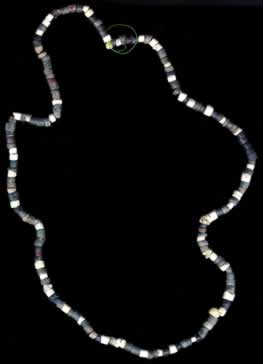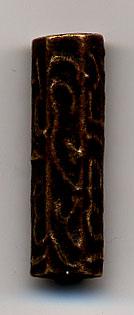




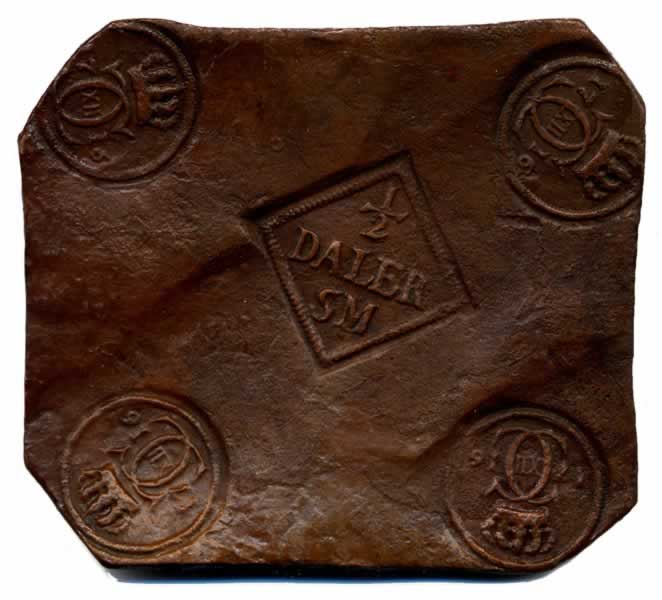
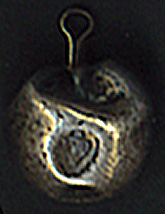
1.Bullet Money .
19th Century round steel money in the shape of a bullet. 15mm diameter, cast on the Straits of Malacca and inscribed with Arabic legends using the lost wax method.
2. Silver bullet money
'Bullet Money' silver primitive currency used in Siam - Thailand as early as the 11th Century and continuing to the 20th. This example mid 19th century stamped with 'trader' marks used for identification. Various denomination from 1/32 to 4 bat issued. Also referred to as ticals. Hook attached.

Вagger Currency Bar. Java. Rectangular currency bar with Arabic script and dagger design. VF. scarce.
PORCELAIN MONEY FROM SIAM
 .
. There was often a shortage of small change in Siam. Porcelain gaming tokens, issued by Chinese owned gambling houses were widely used as money in Siam during the 18th and 19th century. They come in a wide variety of sizes, shapes and colors. After a period of time the gambling houses would recall the tokens and they would be declared valueless, resulting in a substantial profit to the issuer. source:(joelcoins.com)
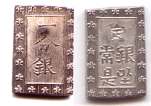


source:(joelcoins.com)
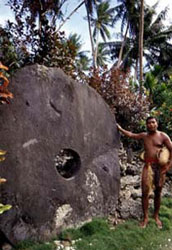

Copper axe money from
Mexico, 16th century
The forms that different peoples have adopted or adapted for their money can tell us much about the nature of money and the history of its use. Some forms are familiar to us today. Their origins are not always as straightforward as we might think, however. Some forms of money are completely unfamiliar. They may look weird and wonderful to our eyes. Or, like the axe, they might look quite familiar, but it simply would not occur to us that they could have been used as money. ( ttp://www.thebritishmuseum.ac.uk)

Today the shell is shown on the national banknotes
( ttp://www.thebritishmuseum.ac.uk)

The split tally is a technique which became common in medieval Europe which was constantly short of money (coins) and predominantly illiterate in order to record bilateral exchange and debts.
A stick (squared Hazelwood sticks were most common) was marked with a system of notches and then split lengthwise. This way both of the two halves record the same notches and each party to the transaction received one half of the marked stick as proof. Later this technique was refined in various ways and became virtually tamper proof. One of the refinements was to make the two halves of the stick of different lengths. The longer part was called stock and was given to the party which had advanced money or (other items) to the receiver. Hence the word stockholder . The shorter portion of the stick was called foil and was given to the party which had received the funds/goods. Using this technique each of the parties had an identifiable and tamper proof record of the transaction.
Native Indians did not use currency but they did collect oblong shells which they polished and sawed into beads. These beads were then strung on leather strings to form necklaces, belts and lengths of shells called wampum, which were frequently given as gifts. Dutch traders had encountered wampum and adopted it as a money substitute. Wampum was used by colonists in New England, New York, New Jersey, Pennsylvania and Virginia. In West New Jersey wampum was the major means of payment until 1682.
(Sources http://www.coins.nd.edu/ColCoin/ColCoinIntros/Wampum.intro.html)

